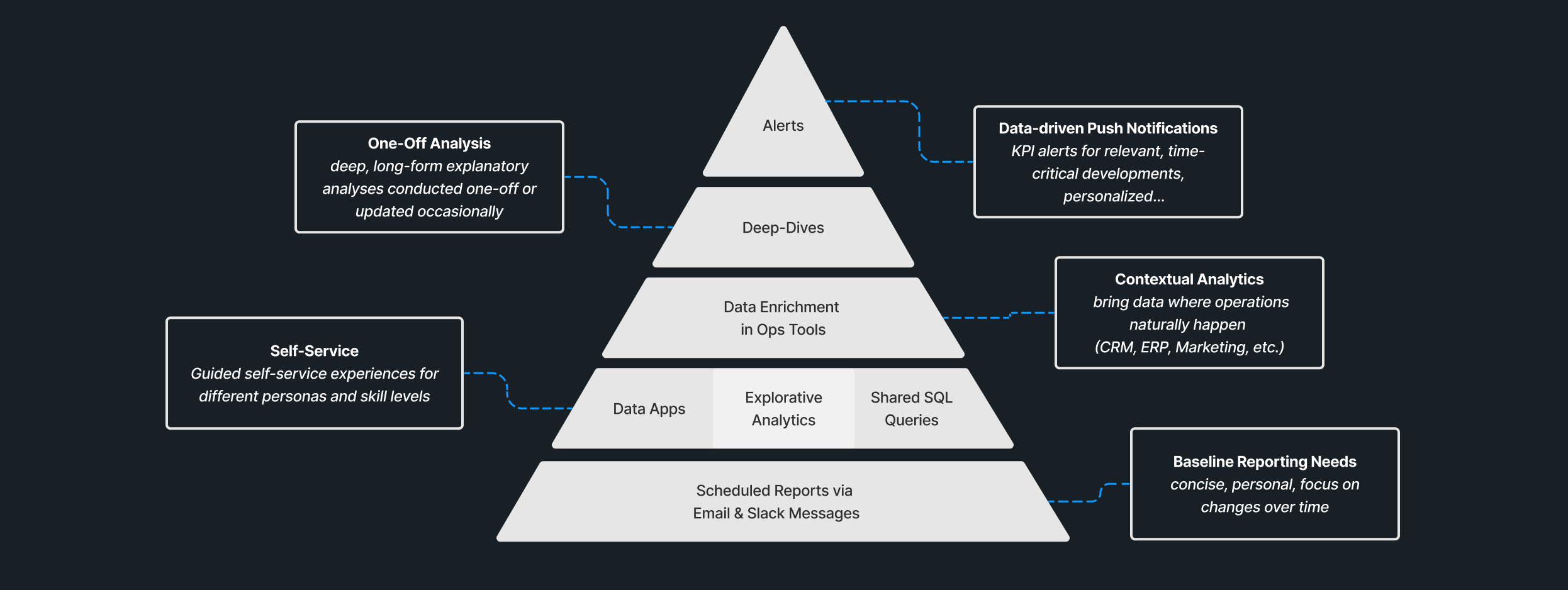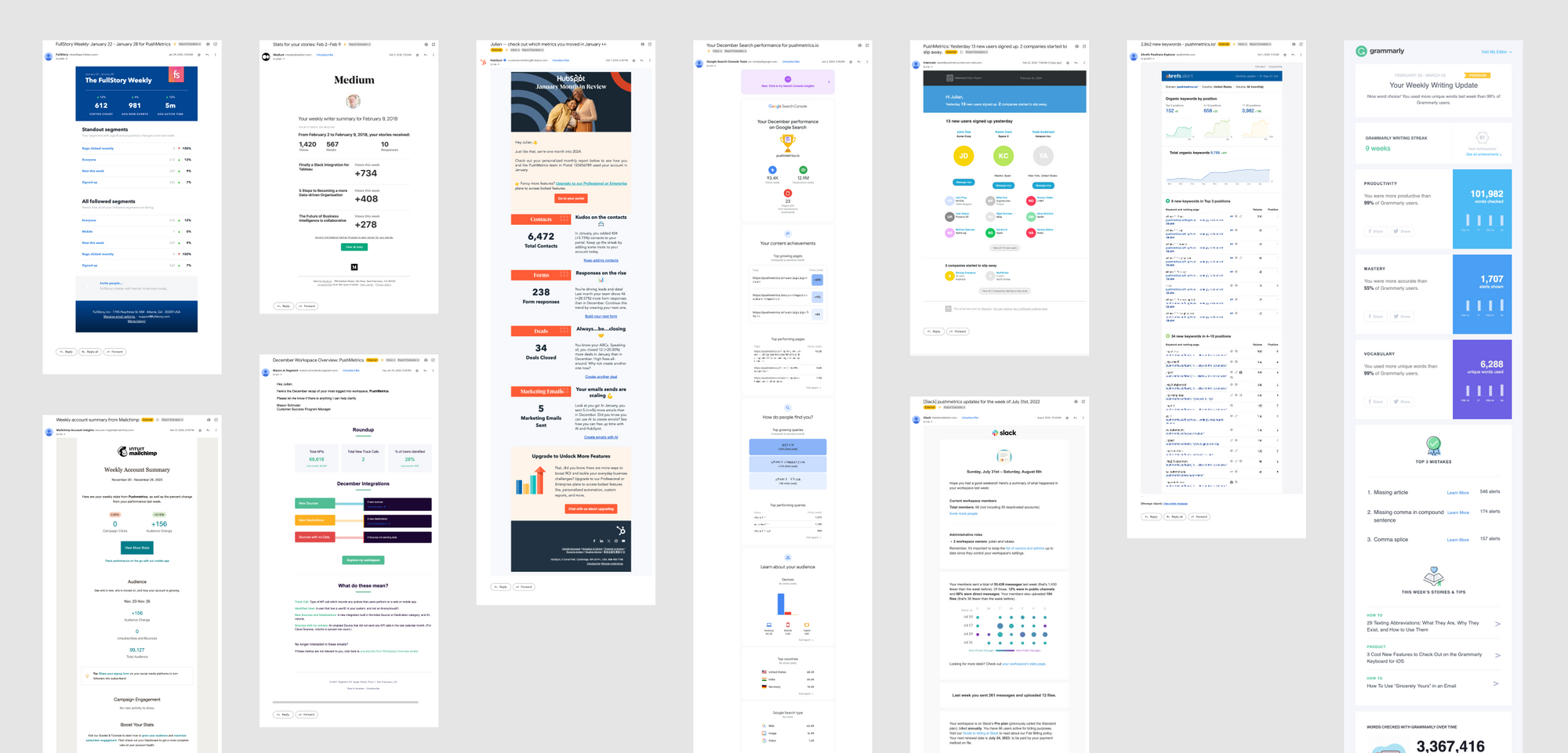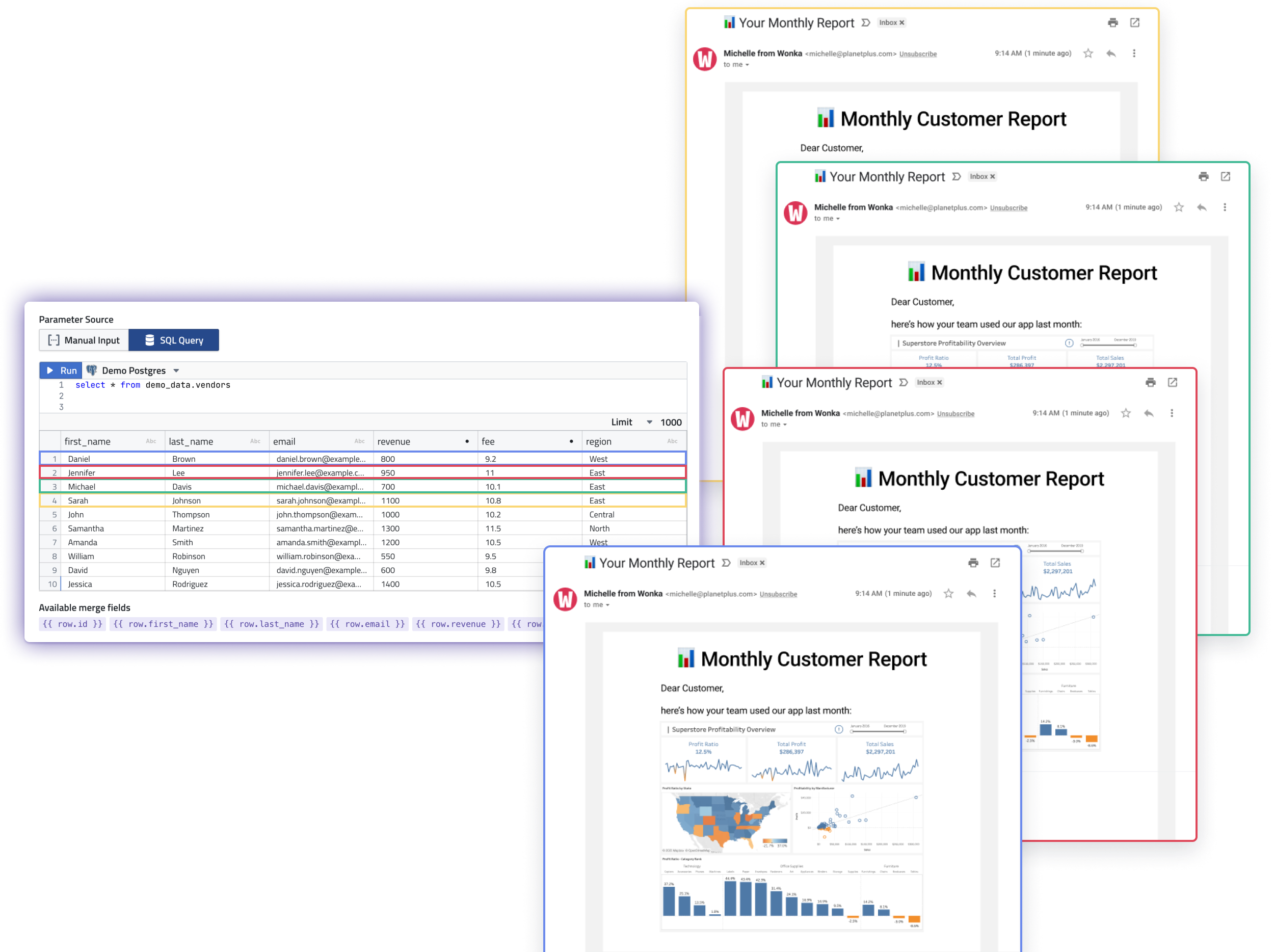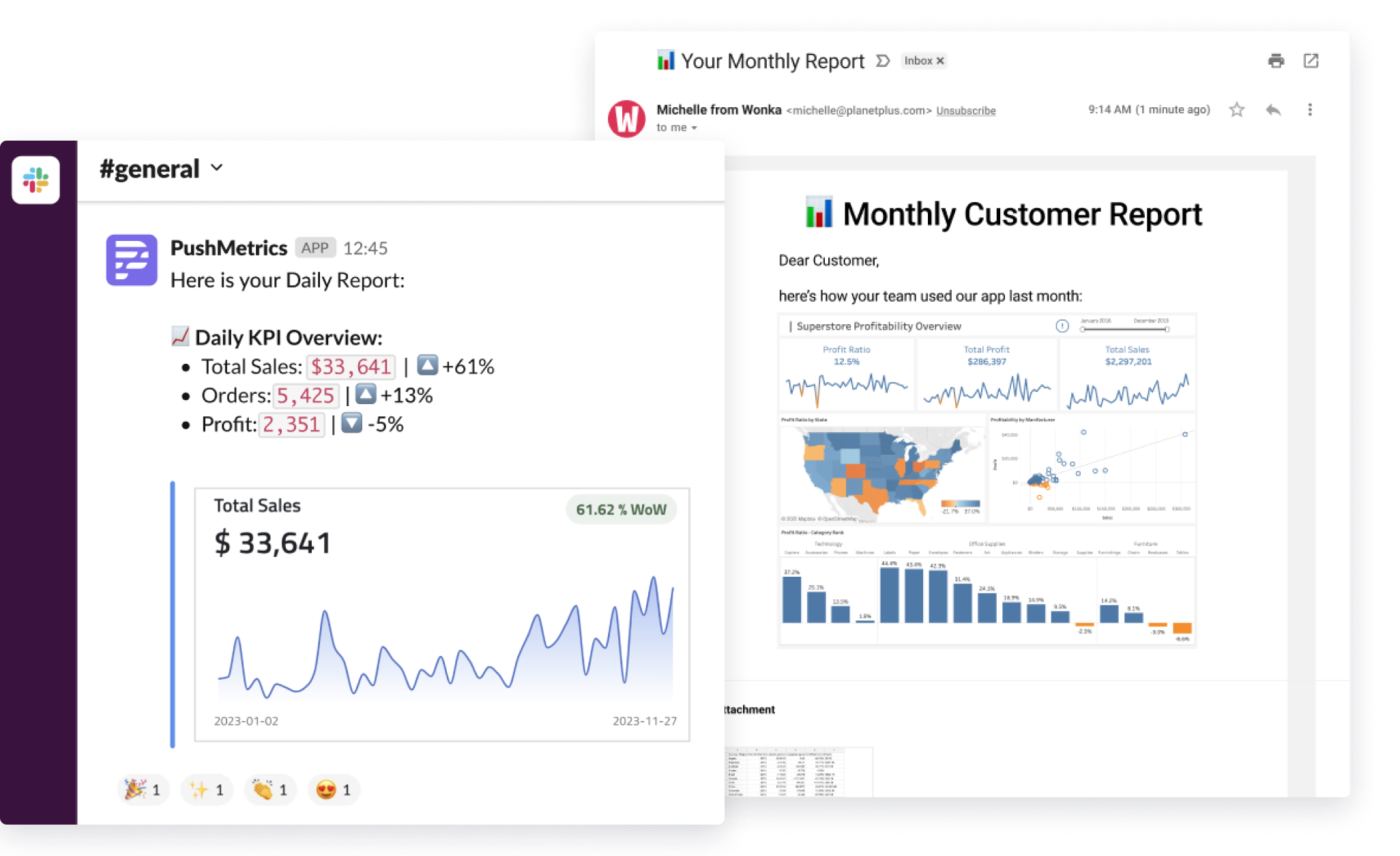Moving beyond dashboards: The importance of orchestration in business intelligence
Dashboards have long been considered the default solution. But it's time to embrace a more holistic, orchestrated approach to BI.

In data teams, there is a tendency to just throw dashboards at every problem. So much so that it has already become an internet meme.
But it’s true - I've personally seen companies with thousands and thousands of Tableau dashboards - most of them never or barely used.
It’s easy to blame the users for just “not wanting to be data-driven” but that’s clearly missing the point.
The reason why this approach is failing is that dashboards are simply not the holy grail but just one out of many different analytical instruments.
In order to effectively serve an organization's analytics needs, it is necessary to take into account the different requirements and skill levels of stakeholders. This means providing a range of different tools, including scheduled reports, operational information, alerting systems, ad-hoc exploratory tools, and long-form deep-dive reports.
By orchestrating these different instruments, it is possible to create a truly great analytics experience.
People have different analytical needs
It sounds obvious but people in companies have different analytical needs depending on their skill level and situation.
For example, someone with a strong technical background working on planning a long-term strategic initiative needs different data than someone who has limited analytical experience and is trying to solve an operational problem on the fly.
In general, analytical needs can be characterized by three factors: timeliness, analytical depth, and format:
Timeliness - While some baseline information needs to be delivered regularly on a schedule, many things are only relevant when a specific event occurs or a the need for a one-off analysis comes up ad-hoc.
Analytical depth refers to the level of detail and complexity required. For example, a daily KPI report should be high-level, while a more complex deep-dive analysis delivers a detailed breakdown of the data from various dimensions and angles.
Format refers to the best way and medium in which the data is presented. This can include dashboards with tables and charts, as well as written reports or text-based slack notifications. But it can also mean re-integrating data to be displayed directly in source systems like CRMs, ERPs, or marketing tools.
With those characteristics in mind, let’s take a look at the different options:
Covering the bases with scheduled reporting
The goal of this “classic” way of reporting is to provide relevant and timely information to stakeholders so that they can stay informed about the general performance and progress of the organization (or team/department).
To achieve this, it’s important to present only information that is relevant and important, and that needs to be reviewed regularly. This means reducing the amount of information included in the reports and focusing only on the key metrics and data points that are most important to the stakeholders.
One key aspect of this approach is the idea of "data coming to the people" rather than expecting them to go and find the information themselves. This means using a variety of channels and methods to ensure that the reports are delivered to the right people, in a way that is convenient and accessible for them.
Scheduled reports delivered via email, Slack, Microsoft Teams, or other communication channels can provide stakeholders with the information they need without requiring them to log in to BI tools. This makes the data more accessible and distributes it in a way that is relevant and easy to understand.
Sending data back to source systems for operational use
Another important consideration is the (re-)integration of BI data with operational systems. By providing reporting data directly within the tools that people use in their day-to-day work, it makes it easier for them to use the information and incorporate it into their decision-making processes. This can be particularly useful for providing operational information that is required to do a job, such as data in CRMs or other systems.
This data should be very specific and it’s important not to bloat source systems with irrelevant or inconsistent information.
Alerting systems for critical events and changes
In addition to providing regular reports, it is also essential to have systems in place for alerting stakeholders when something significant or critical occurs.
This could be in the form of summary reports or ad-hoc alert messages, depending on the severity of the situation.
By ensuring that stakeholders are only alerted when it is truly necessary, it is possible to avoid overwhelming them with information and to ensure that they are able to focus on the most important issues.
Again, the theme here is bringing data closer to the people, not relying on people to actively search for information.
Ad-hoc analysis and self-service exploration tools
If people have questions, they want answers and they want them fast.
Therefore, it is important to provide tools for ad-hoc analysis and self-service exploration. This allows stakeholders to quickly and easily get answers to the questions they have, without having to rely on a ticketing system or other manual support mechanisms.
Especially for this case, the best format for this will vary depending on the needs and skills of the individual stakeholder. For some people, this can be explorative dashboards with lots of filters and drill-downs, for others, it’s clean, curated data sets, and easy access to a SQL editor.
Providing valuable insights through long-form deep-dives
Most things that end up in dashboards are interesting to look at exactly once.
Instead of creating dashboards for this kind of information, long-form deep dives can provide a detailed and comprehensive understanding of a particular topic or issue. Unlike regular reports, which are delivered on a regular basis, these deep-dive reports are typically only produced once and are designed to provide a snapshot of a particular issue or situation at a specific point in time.
In some cases, it makes sense to update these reports or analyses infrequently, e.g. when there are significant changes or developments in the topic or issue being studied.
This means that the information in these reports is typically relevant for a longer period of time, and can be used to inform decision-making over an extended period.
Data notebooks are a great format to deliver such deep dives.
Orchestrating different needs effectively
It’s time to move beyond the dashboard-centric approach and embrace a more holistic, orchestrated approach to BI.
By considering the needs of stakeholders and providing the right mix of scheduled reports, operational information, alerting systems, ad-hoc analysis tools, and deep-dive analysis, it is possible to create a truly effective and valuable analytics experience.
Getting there requires data teams to adopt new tools, mindset changes, and skillsets.
With PushMetrics, we are building a central data workspace to orchestrate great BI experiences end to end.
Julian Schulte
Related Articles

10 SaaS Usage Report Emails: How Companies Like Hubspot, Slack & Intercom Use Data To Maximize User Engagement
Product usage report emails are more than just automated messages; they're a window into how users interact with software, providing invaluable insights on engagement levels, feature adoption, and areas for improvement.

Julian Schulte

10 SaaS Usage Report Emails: How Companies Like Hubspot, Slack & Intercom Use Data To Maximize User Engagement
Product usage report emails are more than just automated messages; they're a window into how users interact with software, providing invaluable insights on engagement levels, feature adoption, and areas for improvement.
Julian Schulte
Subscribe to our newsletter
Get the latest updates from the PushMetrics team.
Thank you for subscribing.
Start sending data-driven messages today
Sign up and start using PushMetrics for free.
Or schedule a demo and discuss your use case.

